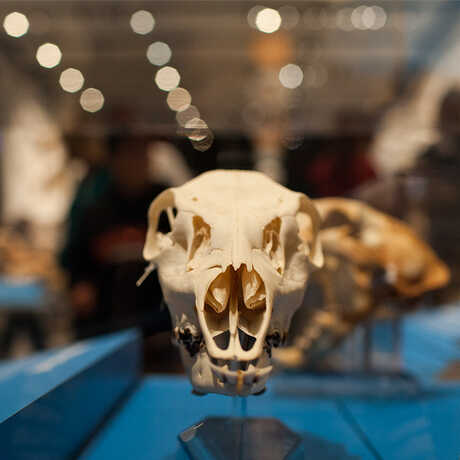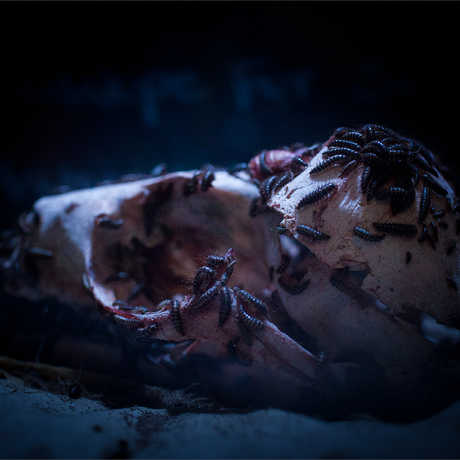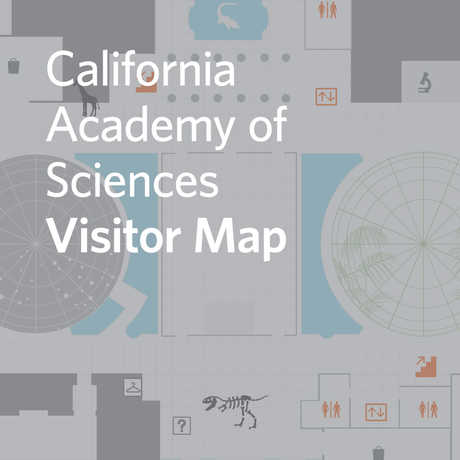Visit an aquarium, planetarium, rainforest, and natural history museum—all under one living roof.
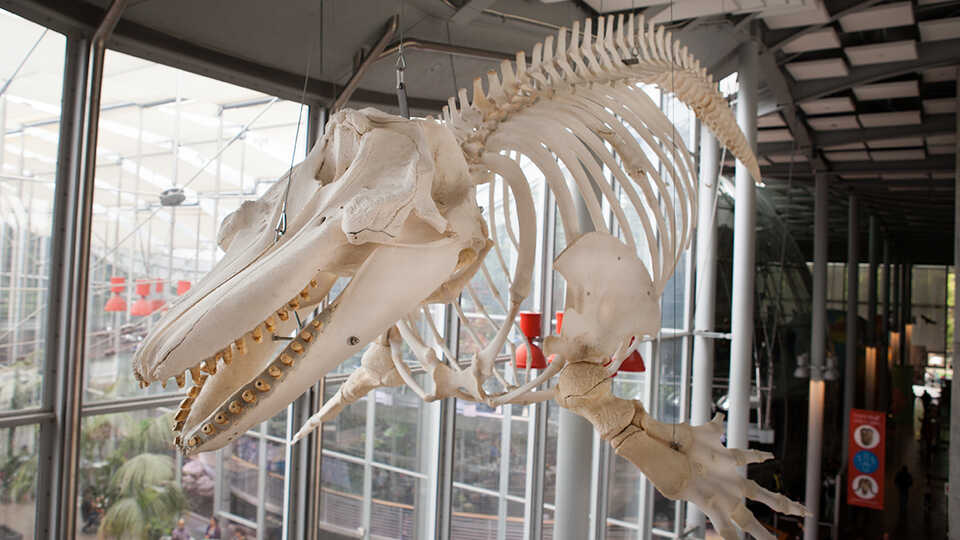
Follow the Journey of Orca O319 from Pacific Ocean to Academy Collections
When viewing the hundreds of “dead heads” on display in Skulls—or visiting a handful of our 45.6 million specimens on a behind-the-scenes tour—it’s hard not to wonder: How did all these creatures get here? Some were donated (by individuals or by other museums), but most were collected by Academy researchers. Collections are often gathered during carefully planned fieldwork and expeditions, but sometimes—as in the case of Orca O319—they start with a phone call.
Call and response
On the day after Thanksgiving 2011, Academy Ornithology and Mammalogy Collections Manager Moe Flannery’s phone rang: A dead orca had been reported washed up on a beach at Point Reyes National Seashore. As a member of the Marine Mammal National Stranding Network, it wasn’t unusual for the Academy to get a phone call like this, and Flannery quickly gathered a team to travel to the site and take the photographs, measurements, plus skin, muscle, and blubber samples required for every stranding. Unbeknownst to Flannery, it wouldn’t be a quick process; the collection of Orca O319 would take nearly two years to complete.
Identification
In the course of taking measurements and samples and performing a necropsy, Flannery photographed the orca’s “saddle patch” (a white marking behind the dorsal fin) and the fin itself, carefully documenting nicks and scratches. She emailed the photos to various orca researchers and got a response just hours later from Graeme Ellis, a research technician at the Department of Fisheries and Oceans Canada. Ellis identified the animal as Orca O319, a 12-year-old juvenile “offshore” orca—the rarest of three distinct types that pass through our area. The rarity made O319 an important specimen to make available to researchers, so Flannery decided that instead of collecting just the skull, as she’d planned, the team would bring back the whole skeleton.
Transport
It proved easier said than done. Reaching the orca involved a quarter-mile hike on a nice, flat trail—followed by another hike along a grassy slope, down a steep dirt trail, and over an intertidal area that was at times inaccessible. It took Academy staff and volunteers five visits over the course of four days to lug each and every section of O319 from the beach to the lab. “The skull was the most difficult part,” Flannery recalls, “because it was all one piece and weighed close to 200 pounds.” To get the skull off the beach, up the trail, and into a truck, the team had to get creative, strapping the head of the orca onto a stretcher.
Maceration
Once back at the lab, the team cut as much of the tissue off the bones as possible before placing them in a large tank used specifically for “macerating” oversized skeletons. Maceration is the process of soaking bones in water until naturally occurring bacteria rots the flesh away. “ Sounds disgusting,” says curatorial assistant Laura Wilson, “and it absolutely is! But it also does the trick.” Once bones are cleaned, there’s still the matter of oil, which can leech to the surface of bones—especially marine mammal bones—over time. (The orca’s right flipper, which had been cleaned by a dermestid beetle colony, was particularly slick.) To finish the job, the team employed a number of methods, soaking the bones in diluted sodium perborate (a powder that releases hydrogen peroxide); leaving the skull on the Academy’s roof to bleach in the sun; and putting the greasy flipper through another soak in lacquer thinner.
Articulation
To put Orca O319 back together, Academy staff enlisted the help of 40 volunteers led by Lee Post, aka “the Bone Man”—a veteran of whale skeleton reassembly. Paring ribs and putting lumbar vertebrae together was no easy feat, but the flippers—packed with small bones like those in a human hand and arm—proved even more time-consuming. The team assembled them using CTs scans (taken when the flipper was still intact) as reference. Back in the Project Lab, polyurethane casts were made of O319’s teeth, which were particularly interesting to researchers given the primary prey of offshore orcas: sharks. The 47 cast teeth were painted to match the originals and fitted into the skeleton’s jaw, while the originals went into Collections to be available for study.
Installation
For most specimens, “installation” is as simple as being catalogued in a database and placed on a shelf in a temperature-controlled Collections room, but after a month of assembly in the Academy’s central Piazza—where visitors could examine it closely and ask questions about the process—Orca 0319 was headed for a special place in the rafters. After removing the skull, flippers, and tail, the crew hoisted the skeleton to its permanent display rigging before reassembling it one last time.
Today, Orca 0319 can be seen just feet from the third-floor walkway, between the Naturalist Center and the Forum Theater. “Now that the skeleton is available for researchers,” Flannery says, “scientists from around the world can come and use it for any study they’re interested in. There was so much information gained just from this one individual.” And with frozen tissue and other samples archived in Academy Collections as well, researchers have the ability to continue to learn from 0319 in the future.
Academy scientists partnered with Google to image specimens from our research collections using an advanced, automated 3D technique. The results? Jaw-dropping.
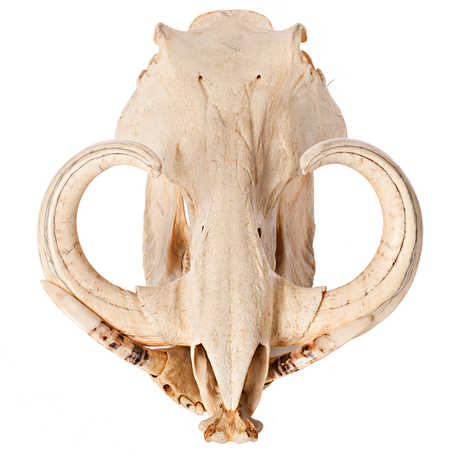
For more than 60 years, Academy field associate Raymond Bandar (1927-2017) collected thousands of skulls. In a ten-case display curated by “Bones” Bandar himself, visitors to the Naturalist Center can explore a variety of skulls featuring curious traits and abnormalities.
